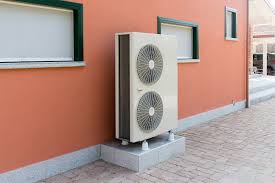Heat pumps are becoming increasingly sought-after as a sustainable and efficient option for cooling and heating homes. They work by transferring heat rather than generating the heat through combustion, which makes them an environmentally sustainable option for climate control. Here’s a comprehensive guide to understanding heat pump (tepelné čerpadlo) , their benefits and uses.
How Heat Pumps Work
At their core they operate using the principle of transfer heat. They use a refrigeration cycle similar to the one found in refrigerators and air conditioners in order to transfer heat from one location to another. In winter, a heating pump draws heat from outdoors air (even in cold weather) and transmits it inside to provide warmth. However, during summer, it reverses the process and act like an air conditioning unit, transferring indoor heat to the outside.
Types of Heat Pumps
Air Source Heat Pumps (ASHPs) are tend to be the most popular and utilize the outside air as a heat source or sink. They are relatively easy to set up and work effectively in a variety of climates.
Ground Source Heat Pumps (GSHPs) are also referred to as geothermal heat pump, these systems make use of the stable temperatures of the earth. They require the burying of an underground loop of pipe to exchange heat. GSHPs tend to be more efficient, however they come with greater installation costs because of the necessity for excavation of the ground.
Water Source Heat Pumps These heat pumps draw heat from water sources such as lakes or a pond. They’re highly efficient but they need to be near a suitable water body.
Benefits of Heat Pumps
The efficiency of energy: Heat pumps are highly efficient, often providing 3-4 times more heating energy to a home than the electrical energy they consume. This efficiency means lower energy costs and less environmental impact.
Environment Impact: by reducing dependence on fossil fuels, and reducing greenhouse gas emissions, heat pumps are a greener option in comparison to conventional heating systems, such as oil or gas furnaces.
Versatility: Heat pumps provide both cooling and heating capabilities which makes them a year-round solution. They can be used in conjunction with existing systems and even be used in combination with solar panels to reduce the cost of energy.
Considerations
Climate suitability: Although the heat pumps can be used in various environments, their efficiency could decrease in extremely cold temperatures. Certain models are made to perform well even in harsh winter conditions.
Installation costs: Initial installation may be expensive particularly when it comes to ground sources. However, long-term savings on energy bills and potential incentives from government could offset these costs.
Maintenance: Regular maintenance is required to ensure optimal performance and longevity. This involves checking the levels of refrigerant, cleaning the filters, and examining components.
In summary the heat pumps are the most efficient and sustainable solution for managing indoor climate. Knowing the various types of heat pumps and their advantages can help you make an informed decision about whether a heat pump is the right choice for your home.


